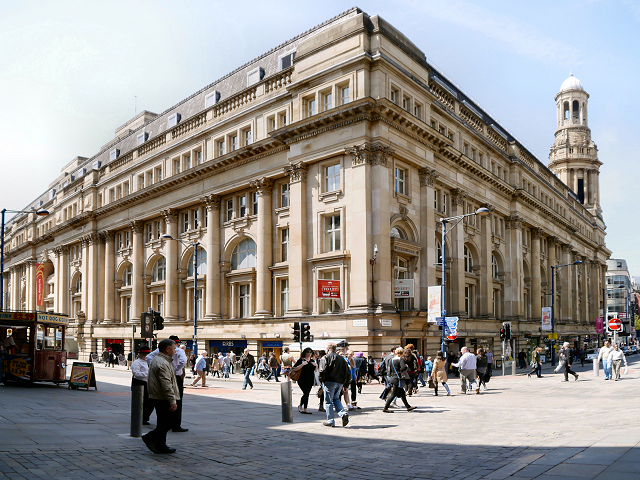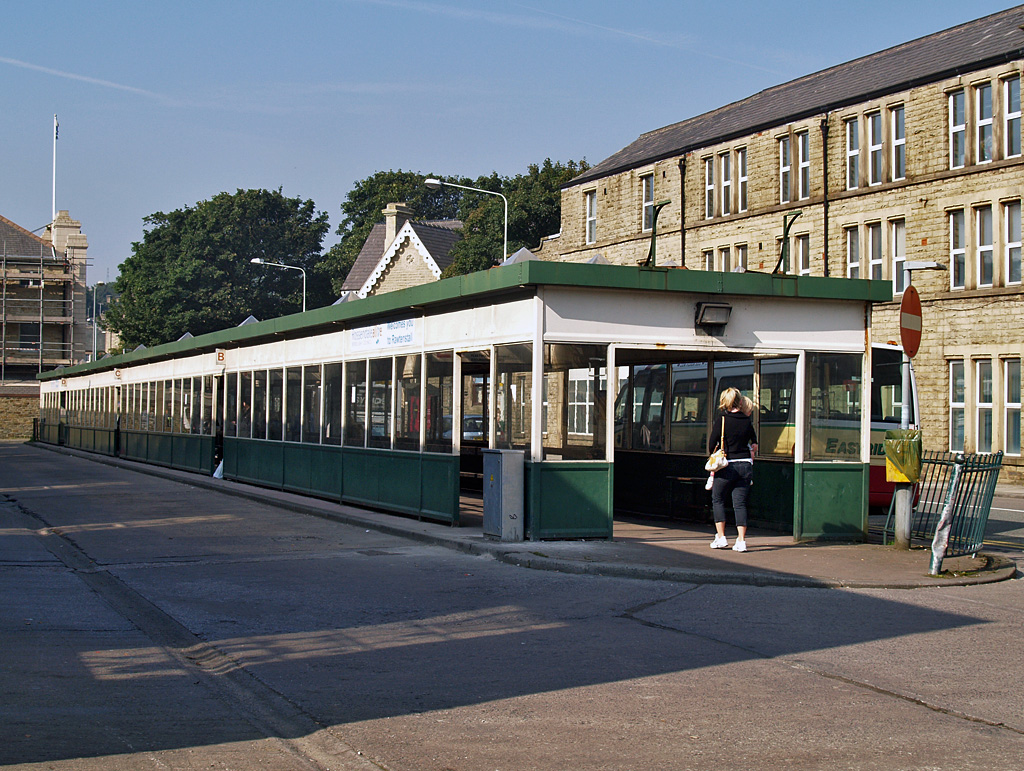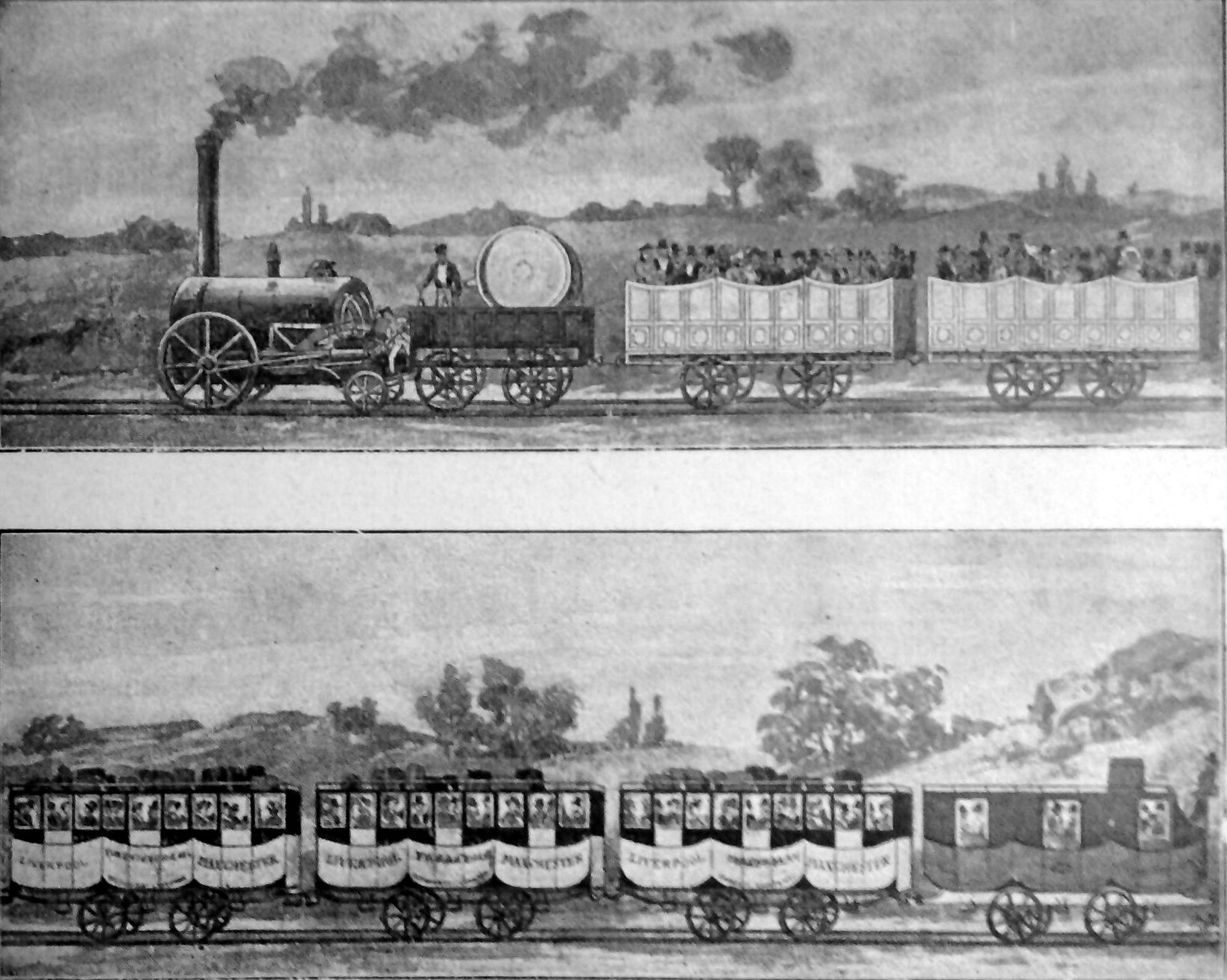|
Cottonopolis
Cottonopolis was a 19th-century nickname for Manchester, as it was a metropolis and the centre of the cotton industry. Background Early cotton mills powered by water were built in Lancashire and its neighbouring counties. In 1781 Richard Arkwright opened the world's first steam-driven textile mill on Miller Street in Manchester. Although initially inefficient, the arrival of steam power signified the beginning of the mechanisation that was to enhance the burgeoning textile industries in Manchester into the world's first centre of mass production. As textile manufacture switched from the home to factories, Manchester and towns in south and east Lancashire became the largest and most productive cotton spinning centre in the world using in 1871, 32% of global cotton production. Ancoats, part of a planned expansion of Manchester, became the first industrial suburb centred on steam power. There were mills whose architectural innovations included fireproofing by use of iron and reinf ... [...More Info...] [...Related Items...] OR: [Wikipedia] [Google] [Baidu] |
Manchester
Manchester () is a city in Greater Manchester, England. It had a population of 552,000 in 2021. It is bordered by the Cheshire Plain to the south, the Pennines to the north and east, and the neighbouring city of City of Salford, Salford to the west. The two cities and the surrounding towns form one of the United Kingdom's most populous conurbations, the Greater Manchester Built-up Area, which has a population of 2.87 million. The history of Manchester began with the civilian settlement associated with the Roman Britain, Roman fort (''castra'') of ''Mamucium'' or ''Mancunium'', established in about AD 79 on a sandstone bluff near the confluence of the rivers River Medlock, Medlock and River Irwell, Irwell. Historic counties of England, Historically part of Lancashire, areas of Cheshire south of the River Mersey were incorporated into Manchester in the 20th century, including Wythenshawe in 1931. Throughout the Middle Ages Manchester remained a manorialism, manorial Township ( ... [...More Info...] [...Related Items...] OR: [Wikipedia] [Google] [Baidu] |
Rawtenstall
Rawtenstall () is a town in the borough of Rossendale, Lancashire, England. The town lies 15 miles/24 km north of Manchester, 22 miles/35 km east of Preston and 45 miles/70 km south east of the county town of Lancaster. The town is at the centre of the Rossendale Valley. It had a population of 23,000. Toponym The name Rawtenstall has been given two possible interpretations. The older is a combination of the Middle English ''routen'' ('to roar or bellow'), from the Old Norse ''rauta'' and the Old English stall 'pool in a river' (Ekwall 1922, 92). The second, more recent one, relates to Rawtenstall's identification as a cattle farm in 1324 and combines the Old English ''ruh'' 'rough' and ''tun-stall'' 'the site of a farm or cow-pasture', or possibly, 'buildings occupied when cattle were pastured on high ground' History The earliest settlement at Rawtenstall was probably in the early Middle Ages, during the time when it formed part of the Rossendale Valley in the Honour of Cl ... [...More Info...] [...Related Items...] OR: [Wikipedia] [Google] [Baidu] |
Royal Exchange Building
Royal may refer to: People * Royal (name), a list of people with either the surname or given name * A member of a royal family Places United States * Royal, Arkansas, an unincorporated community * Royal, Illinois, a village * Royal, Iowa, a city * Royal, Missouri, an unincorporated community * Royal, Nebraska, a village * Royal, Franklin County, North Carolina, an unincorporated area * Royal, Utah, a ghost town * Royal, West Virginia, an unincorporated community * Royal Gorge, on the Arkansas River in Colorado * Royal Township (other) Elsewhere * Mount Royal, a hill in Montreal, Canada * Royal Canal, Dublin, Ireland * Royal National Park, New South Wales, Australia Arts, entertainment, and media * ''Royal'' (Jesse Royal album), a 2021 reggae album * ''The Royal'', a British medical drama television series * ''The Royal Magazine'', a monthly British literary magazine published between 1898 and 1939 * ''Royal'' (Indian magazine), a men's lifestyle bimonthly * Royal Te ... [...More Info...] [...Related Items...] OR: [Wikipedia] [Google] [Baidu] |
Thomas Harrison (architect)
Thomas Harrison (7 August (baptised) 1744 – 29 March 1829) was an English architect and bridge engineer who trained in Rome, where he studied classical architecture. Returning to England, he won the competition in 1782 for the design of Skerton Bridge in Lancaster. After moving to Lancaster he worked on local buildings, received commissions for further bridges, and designed country houses in Scotland. In 1786 Harrison was asked to design new buildings within the grounds of Lancaster and Chester castles, projects that occupied him, together with other works, until 1815. On both sites he created accommodation for prisoners, law courts, and a shire hall, while working on various other public buildings, gentlemen's clubs, churches, houses, and monuments elsewhere. His final major commission was for the design of Grosvenor Bridge in Chester. Some of Harrison's designs, including his buildings at Lancaster Castle, were Gothic in style, but most were Neoclassical, partic ... [...More Info...] [...Related Items...] OR: [Wikipedia] [Google] [Baidu] |
Chapmen
A chapman (plural ''chapmen'') was an itinerant dealer or hawker in early modern Britain. Etymology Old English ''céapmann'' was the regular term for "dealer, seller", cognate with the Dutch ''koopman'' with the same meaning. Old English ''céap'' meant "deal, barter, business". The modern adjective ''cheap'' is a comparatively recent development from the phrase ''a good cheap'', literally "a good deal" (cf. modern Dutch ''goedkoop'' = cheap). The word also appears in names such as Cheapside, Eastcheap, Chepstow and the prefix Chipping: all markets or dealing places. The name of the Danish capital Copenhagen has a similar origin, being derived from ''Køpmannæhafn'', meaning "merchants' harbour" or "buyer's haven". By 1600, the word ''chapman'' had come to be applied to an itinerant dealer in particular, but it remained in use for "customer, buyer" as well as "merchant" in the 17th and 18th centuries. The slang term for man, "chap" arose from the use of the abbreviated word ... [...More Info...] [...Related Items...] OR: [Wikipedia] [Google] [Baidu] |
Baines 1835-Exchange, Manchester
Baines is a surname of English, Scottish or Welsh origin. It shares many of the same roots with the British surname Bains.Reaney, P.H. ''A Dictionary of British Surnames'' Routledge & Kegan Paul, 2nd edition (1976)Hanks, P. & Hodges, F. ''A Dictionary of Surnames'' Oxford University Press (1988) It shares some roots with the British surname Bain. Derivation and variants Baines has a number of different sources, several of them nicknames and another based on an occupation. In Scotland and the north of England the Old English word ''bān'' ('bone') became Middle English ''bān'' and ''bain''. It may have become a nickname in the plural, meaning 'bones' or ' ong-egs' (''cf.'' modern German ''Bein'', also meaning both "bone" and "leg"). The Middle English ''bayn'', ''beyn'' and the Old Norse ''beinn'' meant 'straight' or 'direct', which may have become a nickname. The Middle English ''bayne'' (and French ''bain'') meant 'bath'. This may have become an occupational surname for an a ... [...More Info...] [...Related Items...] OR: [Wikipedia] [Google] [Baidu] |
Industry Sector
Industry classification or industry taxonomy is a type of economic taxonomy that classifies companies, organizations and traders into industrial groupings based on similar production processes, similar products, or similar behavior in financial markets. National and international statistical agencies use various industry-classification schemes to summarize economic conditions. Securities analysts use such groupings to track common forces acting on groups of companies, to compare companies' performance to that of their peers, and to construct either specialized or diversified portfolios. Sectors and industries Economic activities can be classified in a variety of ways. At the top level, they are often classified according to the three-sector theory into sectors: primary (extraction and agriculture), secondary (manufacturing), and tertiary (services). Some authors add quaternary (knowledge) or even quinary (culture and research) sectors. Over time, the fraction of a society's ... [...More Info...] [...Related Items...] OR: [Wikipedia] [Google] [Baidu] |
Liverpool And Manchester Railway
The Liverpool and Manchester Railway (L&MR) was the first inter-city railway in the world. It opened on 15 September 1830 between the Lancashire towns of Liverpool and Manchester in England. It was also the first railway to rely exclusively on locomotives driven by steam power, with no horse-drawn traffic permitted at any time; the first to be entirely double track throughout its length; the first to have a true signalling system; the first to be fully timetabled; and the first to carry mail. Trains were hauled by company steam locomotives between the two towns, though private wagons and carriages were allowed. Cable haulage of freight trains was down the steeply-graded Wapping Tunnel to Liverpool Docks from Edge Hill junction. The railway was primarily built to provide faster transport of raw materials, finished goods and passengers between the Port of Liverpool and the cotton mills and factories of Manchester and surrounding towns. Designed and built by George Ste ... [...More Info...] [...Related Items...] OR: [Wikipedia] [Google] [Baidu] |
Castlefield
Castlefield is an inner-city conservation area in Manchester, North West England. The conservation area which bears its name is bounded by the River Irwell, Quay Street, Deansgate and Chester Road. It was the site of the Roman era fort of Mamucium or Mancunium which gave its name to Manchester. It was the terminus of the Bridgewater Canal, the world's first industrial canal, built in 1764; the oldest canal warehouse opened in 1779. The world's first passenger railway terminated here in 1830, at Liverpool Road railway station and the first railway warehouse opened here in 1831. The Rochdale Canal met the Bridgewater Canal at Castlefield in 1805 and in the 1830s they were linked with the Mersey and Irwell Navigation by two short cuts. In 1848 the two viaducts of the Manchester, South Junction and Altrincham Railway crossed the area and joined each other, two further viaducts and one mainline station Manchester Central railway station followed. It has a tram station, Deansgate ... [...More Info...] [...Related Items...] OR: [Wikipedia] [Google] [Baidu] |
Bridgewater Canal
The Bridgewater Canal connects Runcorn, Manchester and Leigh, in North West England. It was commissioned by Francis Egerton, 3rd Duke of Bridgewater, to transport coal from his mines in Worsley to Manchester. It was opened in 1761 from Worsley to Manchester, and later extended from Manchester to Runcorn, and then from Worsley to Leigh. The canal is connected to the Manchester Ship Canal via a lock at Cornbrook; to the Rochdale Canal in Manchester; to the Trent and Mersey Canal at Preston Brook, southeast of Runcorn; and to the Leeds and Liverpool Canal at Leigh. It once connected with the River Mersey at Runcorn but has since been cut off by a slip road to the Silver Jubilee Bridge. Following the re-routing of roads to the Silver Jubilee Bridge, the Runcorn Locks Restoration Society campaigns to reinstate the flight of locks. The Bridgewater canal is described as the first great achievement of the canal age, although the Sankey Canal opened earlier. Bridgewater captured th ... [...More Info...] [...Related Items...] OR: [Wikipedia] [Google] [Baidu] |
Port Of Manchester
The Port of Manchester was a port in Salford, North West England, until its closure in 1982. It was created as a customs port on 1 January 1894, four months before the official opening of the Manchester Ship Canal. It extended along the whole length of the ship canal, from Eastham in the west to Manchester in the east, absorbing the Port of Runcorn, which had been created in 1862. The new port was only from the Port of Liverpool's boundary at Herculaneum Dock, and from the Port of Garston. The ship canal transformed Manchester from a landlocked city into a major sea port, at its height the third-busiest port in the United Kingdom. Once delivered to the port, goods could be transported to other parts of the country such as Leeds to the east, and up to south as far as Birmingham. History On 1 January 1894, a steamer owned by the Cooperative Wholesale Society, the ''Pioneer'', unloaded its cargo of sugar from Rouen, claiming the honour of being the first merchant vessel to ... [...More Info...] [...Related Items...] OR: [Wikipedia] [Google] [Baidu] |
Burnley
Burnley () is a town and the administrative centre of the wider Borough of Burnley in Lancashire, England, with a 2001 population of 73,021. It is north of Manchester and east of Preston, at the confluence of the River Calder and River Brun. The town is located near the countryside to the south and east, with the towns of Padiham and Brierfield to the west and north respectively. It has a reputation as a regional centre of excellence for the manufacturing and aerospace industries. The town began to develop in the early medieval period as a number of farming hamlets surrounded by manor houses and royal forests, and has held a market for more than 700 years. During the Industrial Revolution it became one of Lancashire's most prominent mill towns; at its peak, it was one of the world's largest producers of cotton cloth and a major centre of engineering. Burnley has retained a strong manufacturing sector, and has strong economic links with the cities of Manchester an ... [...More Info...] [...Related Items...] OR: [Wikipedia] [Google] [Baidu] |





.jpg)
